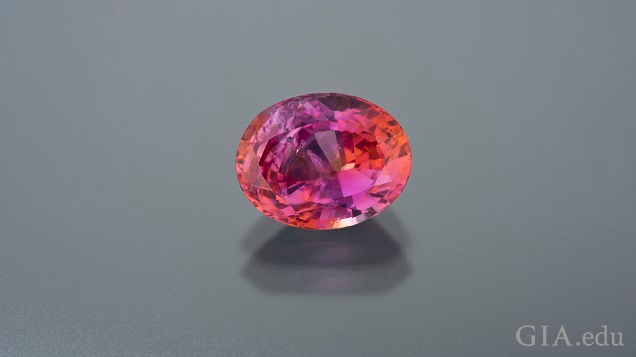Colorblocking: The Art and Fashion of Multicolor Gemstones
July 20, 2018
Clothes, handbags, shoes and accessories that sport multiple solid colors, usually in bold and bright shades called colorblocking, have reappeared on the fashion scene in a big way the last few years, but the trend is not new. It first appeared in Yves Saint Laurent’s 1965 collection, which was inspired by the artistic styles of modern Dutch artist Piet Mondrian, whose paintings were a collection of geometrical and colorful shapes. This 1960s mod fashion may be passé, but just as trends in fashion often return and thrive again, colorblocking feels new.
In the gem world, this style is found in the artistic combinations of color in multicolor gemstones appreciated for their color zoning or banding. Color banding in gems occurs in shapes or distinct layering. Agate, for instance, often forms in geometric shapes, while tourmaline and fluorite form in bold lines and stripes.

Agate and quartz crystallize in zones when chemical or physical conditions change during their formation. When iron is present during the formation of quartz, it can produce citrine, amethyst or ametrine. As the name suggests, this gem is a combination created by color blocks of amethyst and citrine. Depending on how the color zones are oriented during cutting, the two blocks of color (yellow and purple) can be emphasized.
Alternately, these colors can be merged through cutting to produce rich, purple hues of amethyst with honey-color citrine. The result is a striking gem that evokes romantic Bolivian sunsets. The Anahí mine in eastern Bolivia is the only commercial source of ametrine, one of the most exotic multicolor gemstones. Bolivia claims it as its national gemstone.
Tourmaline, more than any other gemstone, is found in every hue and it often has two or more colors visible in a single specimen. The chemical variations during tourmaline’s crystallization determine its color. Multicolor tourmaline can form in zones resembling blocks of color as in bicolor tourmaline – in a great number of color combinations. Black or brown tourmalines get their color from iron. Brown to yellow tourmalines are colored by magnesium. Lithium produces tourmalines that are blue, green, red, yellow or pink.
Tourmaline derives its name from the words “tura mali" loosely translated to "stone of mixed colors" in the Sinhalese language of Sri Lanka. Ancient Egyptian legend tells us that tourmaline passed over a rainbow on its long journey from the center of the earth and took on the spectral colors.
Liddicoatite is a calcium-rich lithium tourmaline named in honor of Richard T. Liddicoat in recognition of his more than 60 years of service to the gem and jewelry industry. Beautiful zones and bands in liddicoatite form in bold colorful patterns due to the changing mix of elements. Colorful slices of liddicoatite are often concentric bands of pink to red, green, blue and light brown.
Fluorite also occurs in every color of the spectrum and is a favorite multicolor gemstone. It is popular with collectors because of its bold colors. Its cubic crystal growth results in a variety of crystal shapes. The word "fluorescent" is derived from the mineral fluorite since many specimens fluoresce strongly, exhibiting a prismatic color variation when viewed in ultraviolet light. The softness of fluorite (4 on the Mohs hardness scale), suggest it is best be carved into ornamental objects. Rarely faceted, cut fluorite is a collector’s prize, especially when it shows great variety of colors in one gem.
The colorblocking trend in fashion may be a recurrent theme, but the popularity of multicolor gemstones exhibiting a similar effect is enduring.
Sharon Bohannon, a media editor who researches, catalogs and documents photos, is a GIA GG and GIA AJP. She works in the Richard T. Liddicoat Gemological Library and Information Center.





